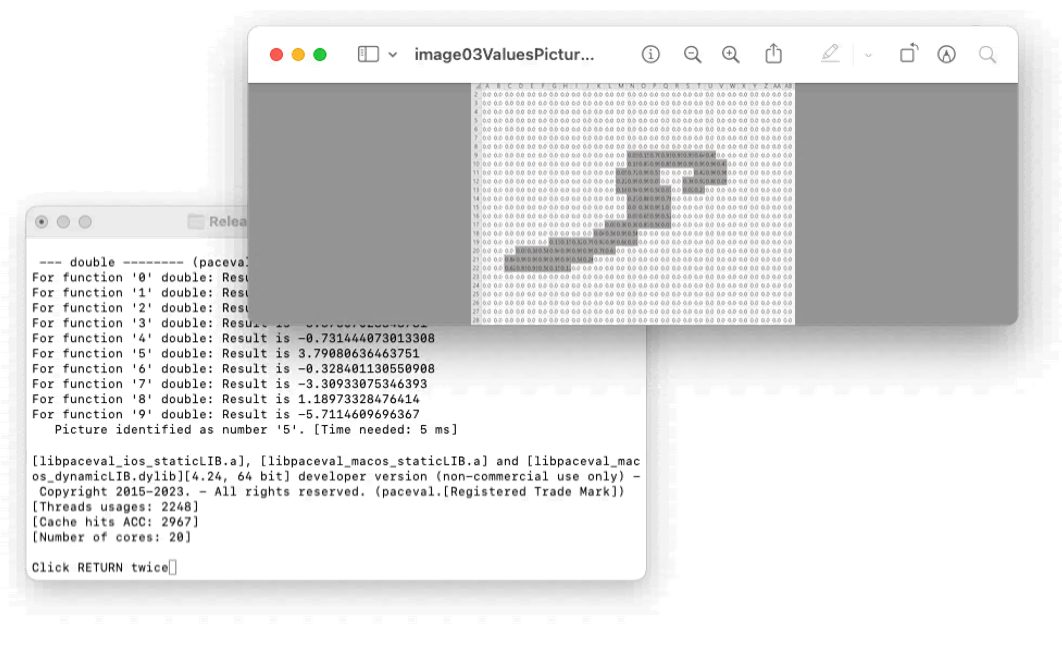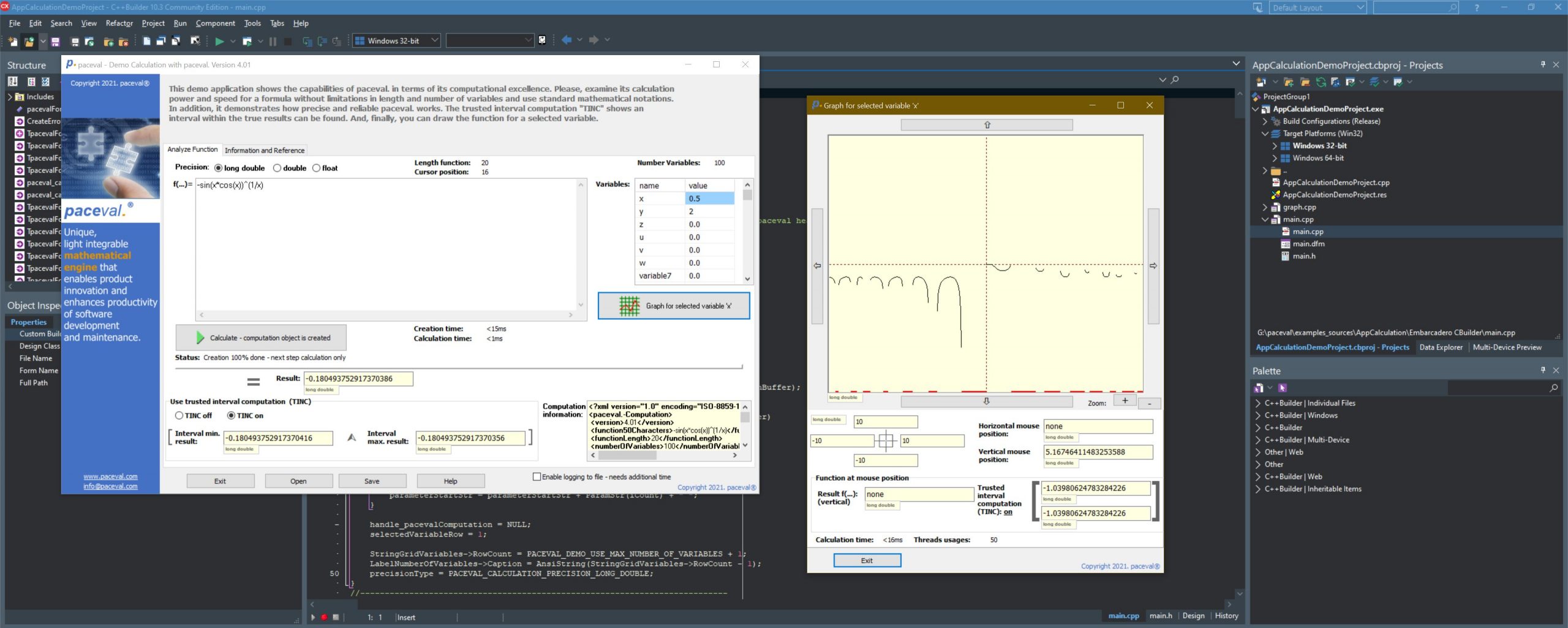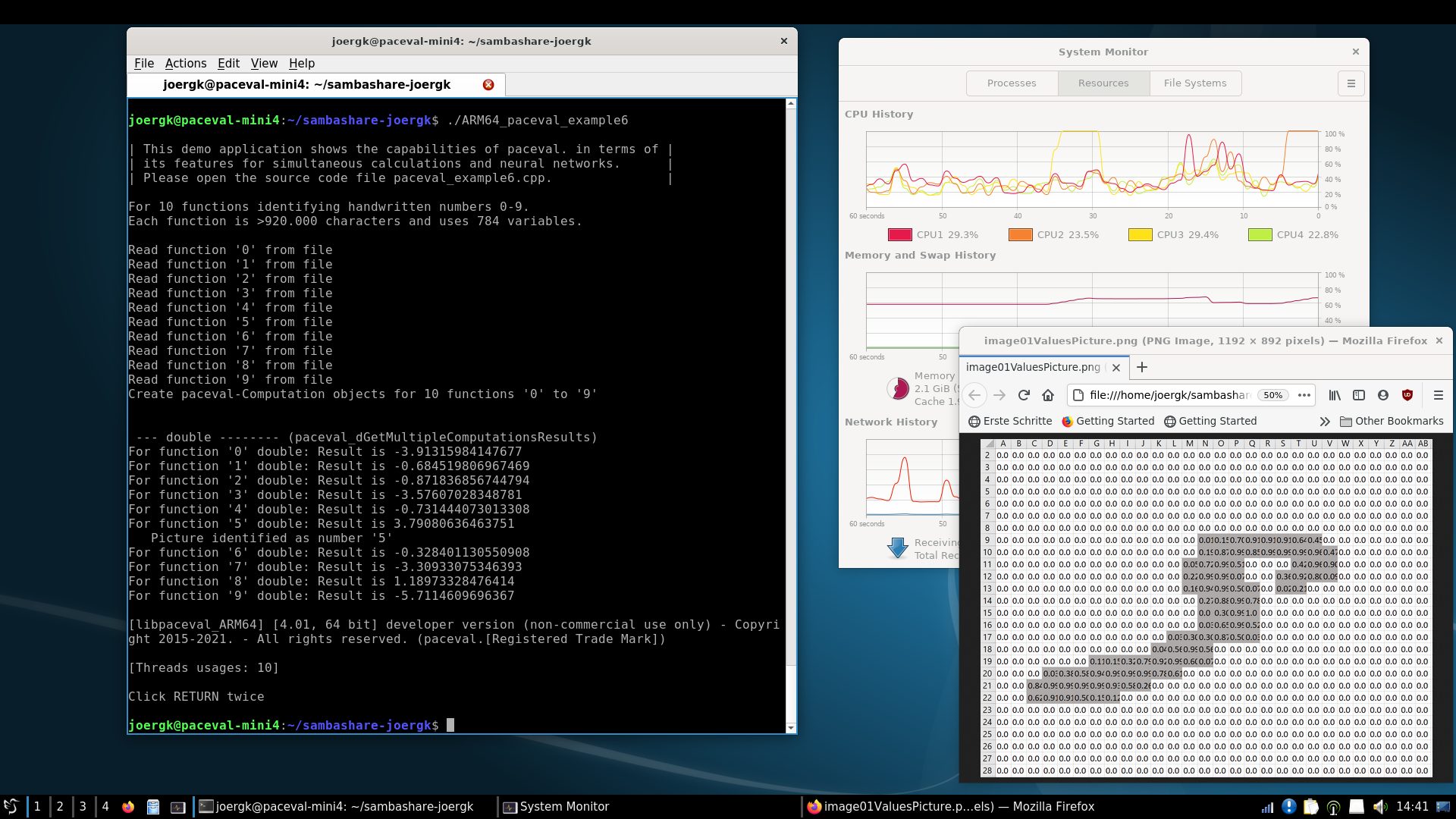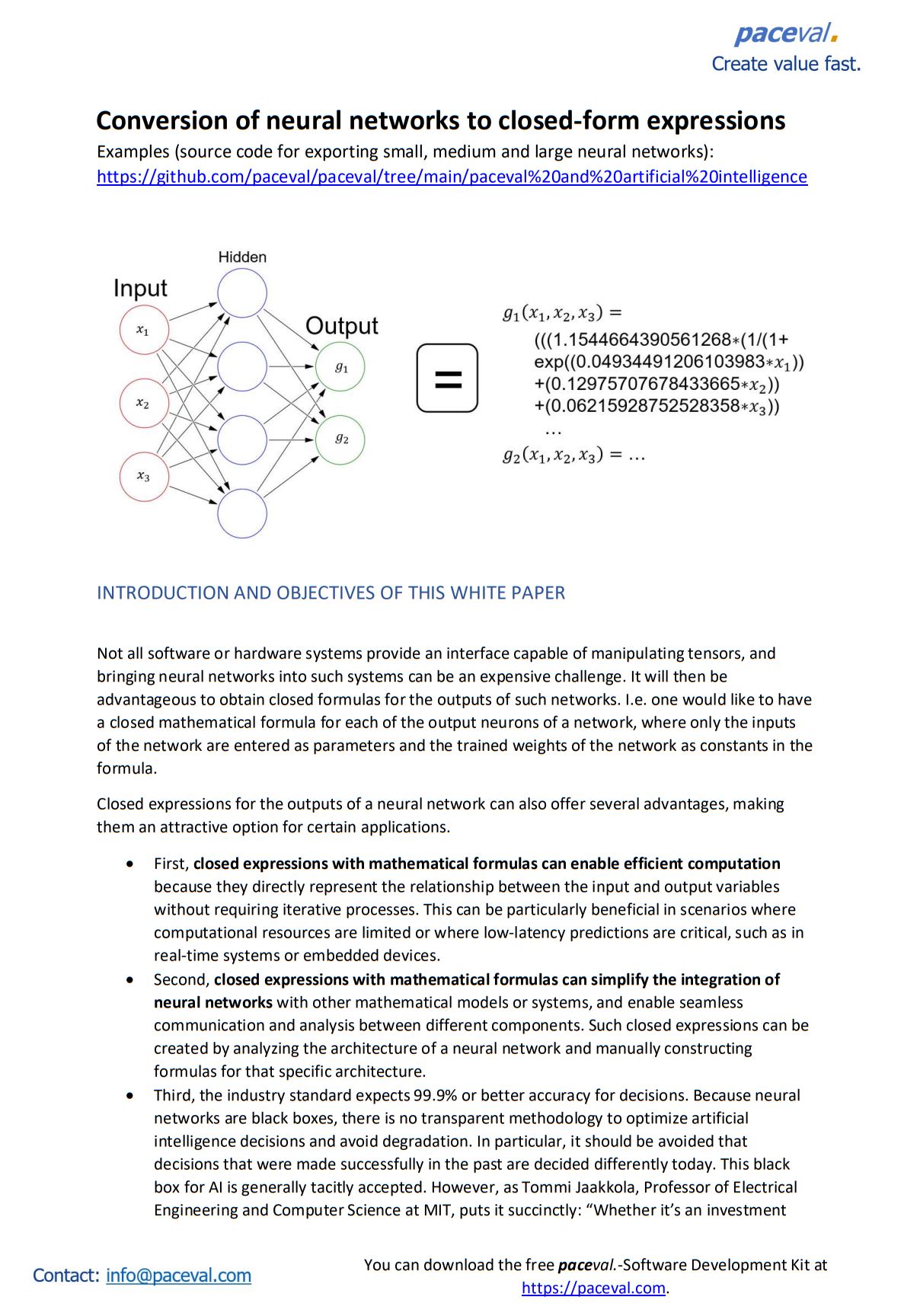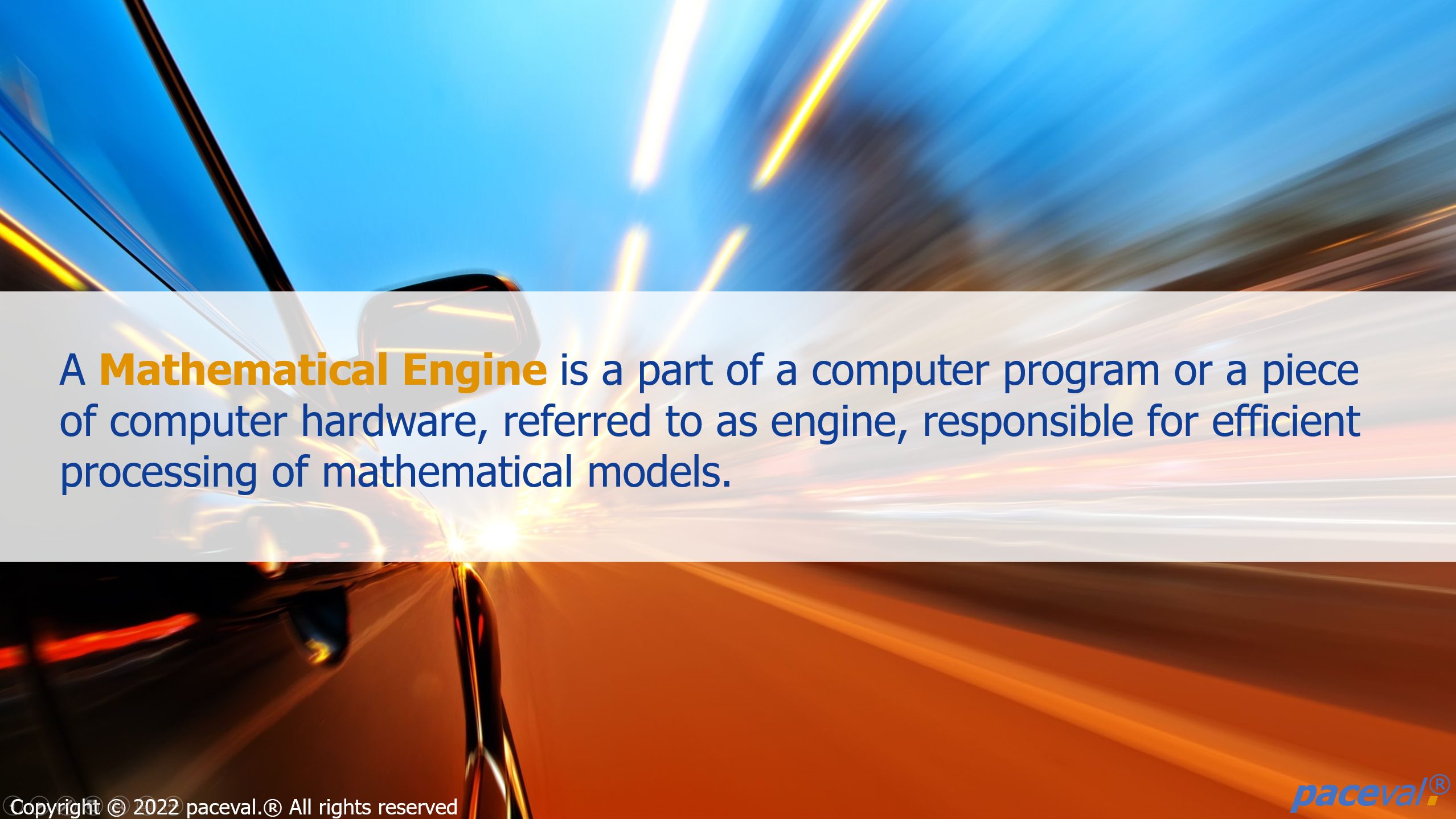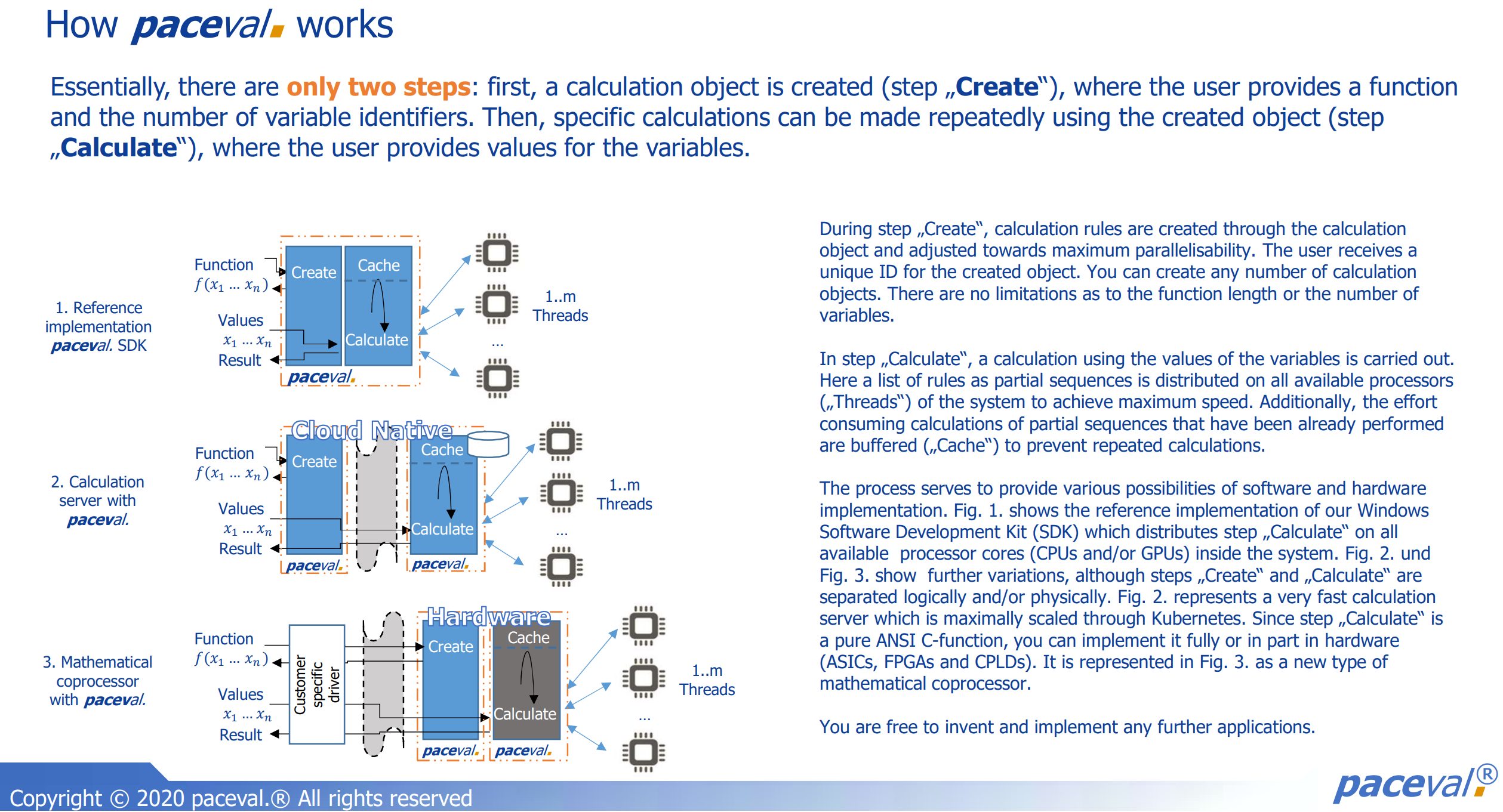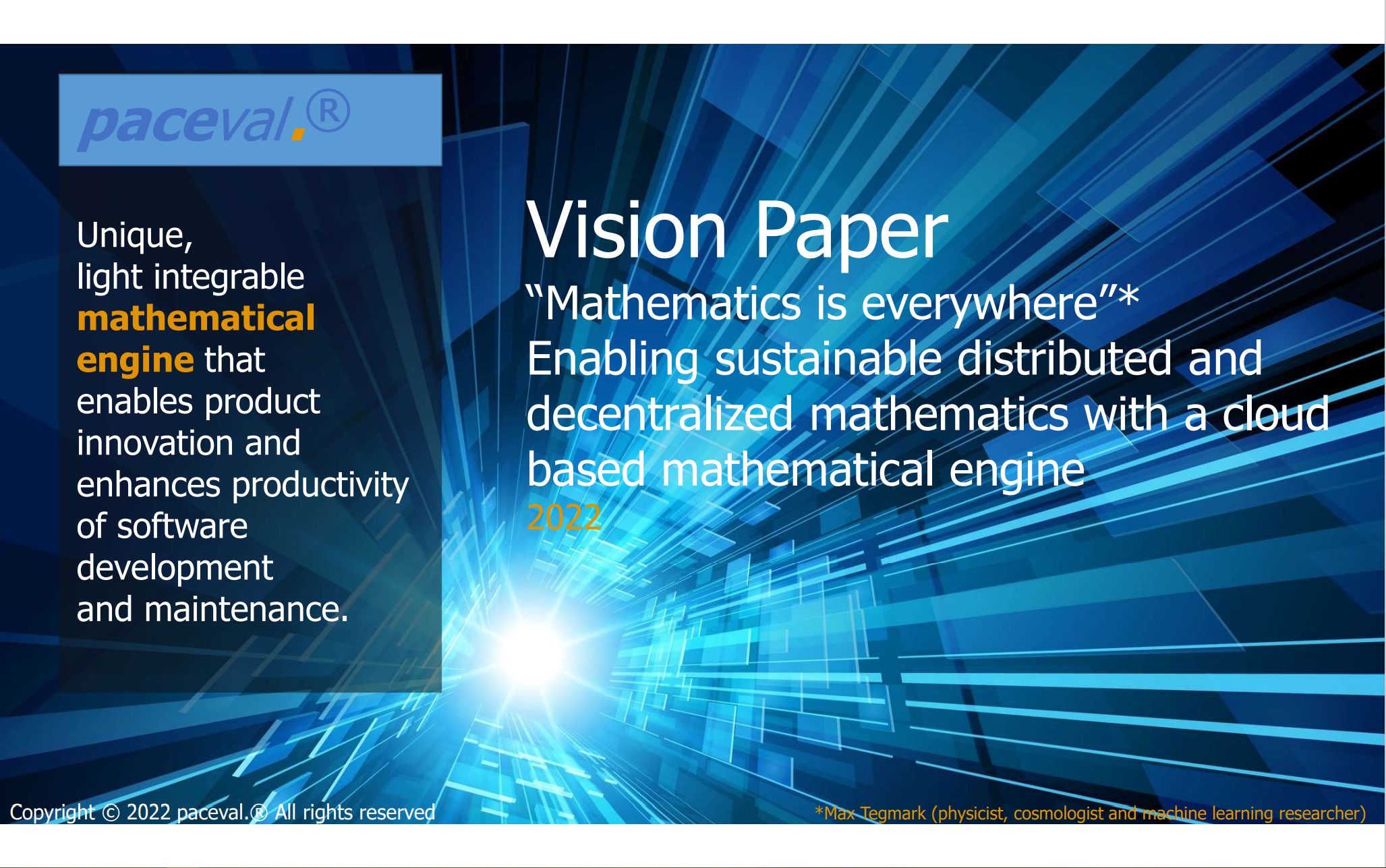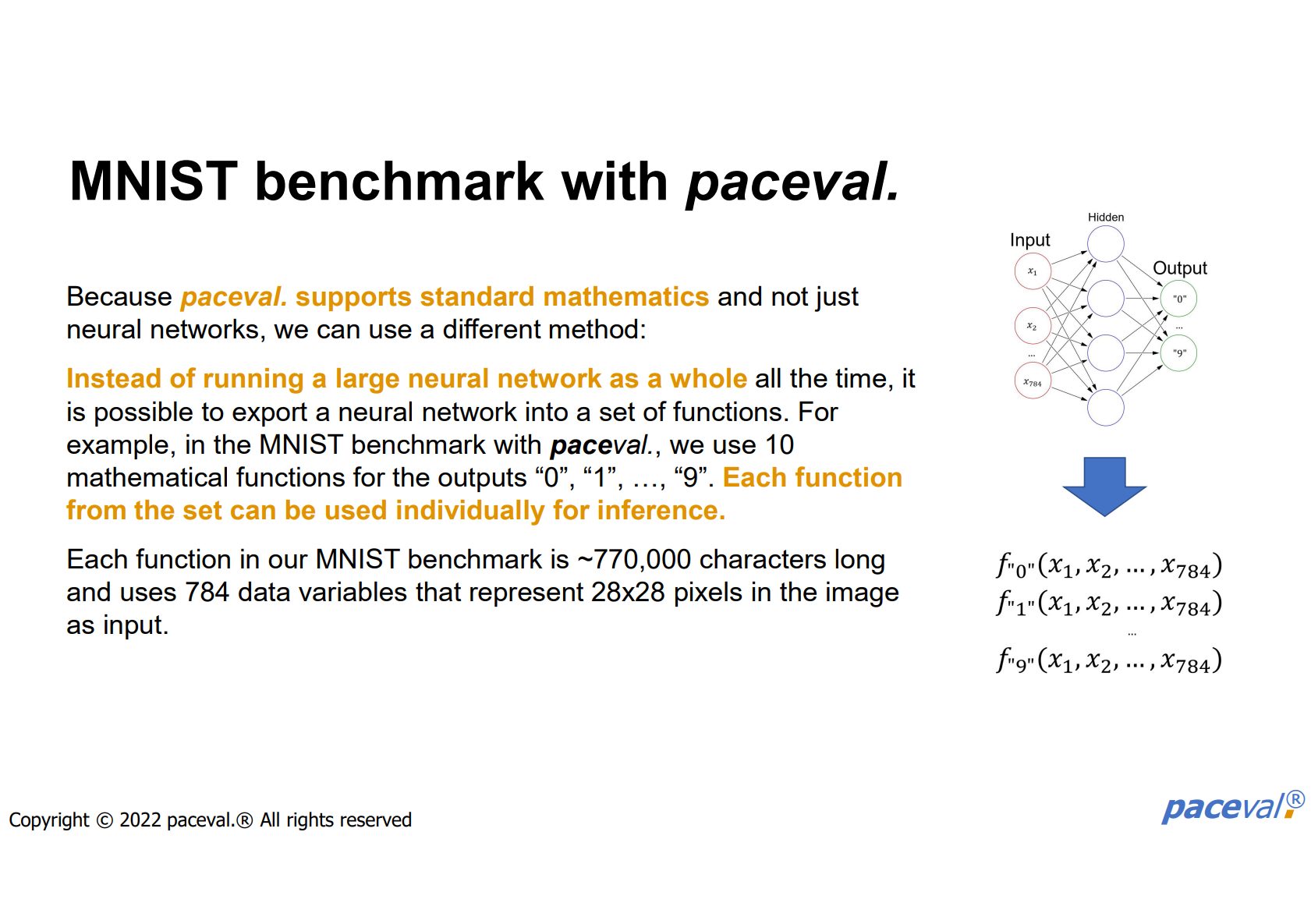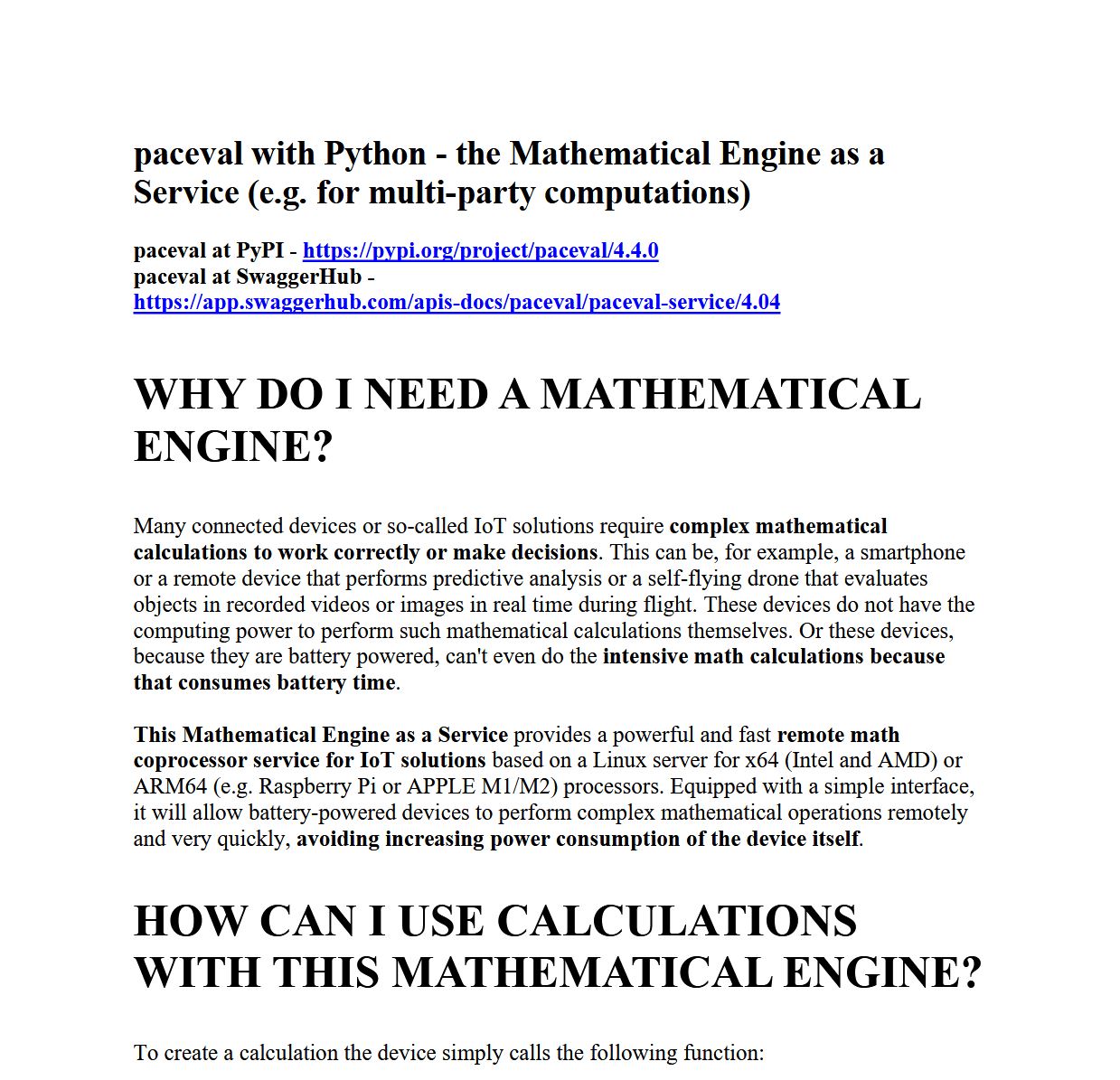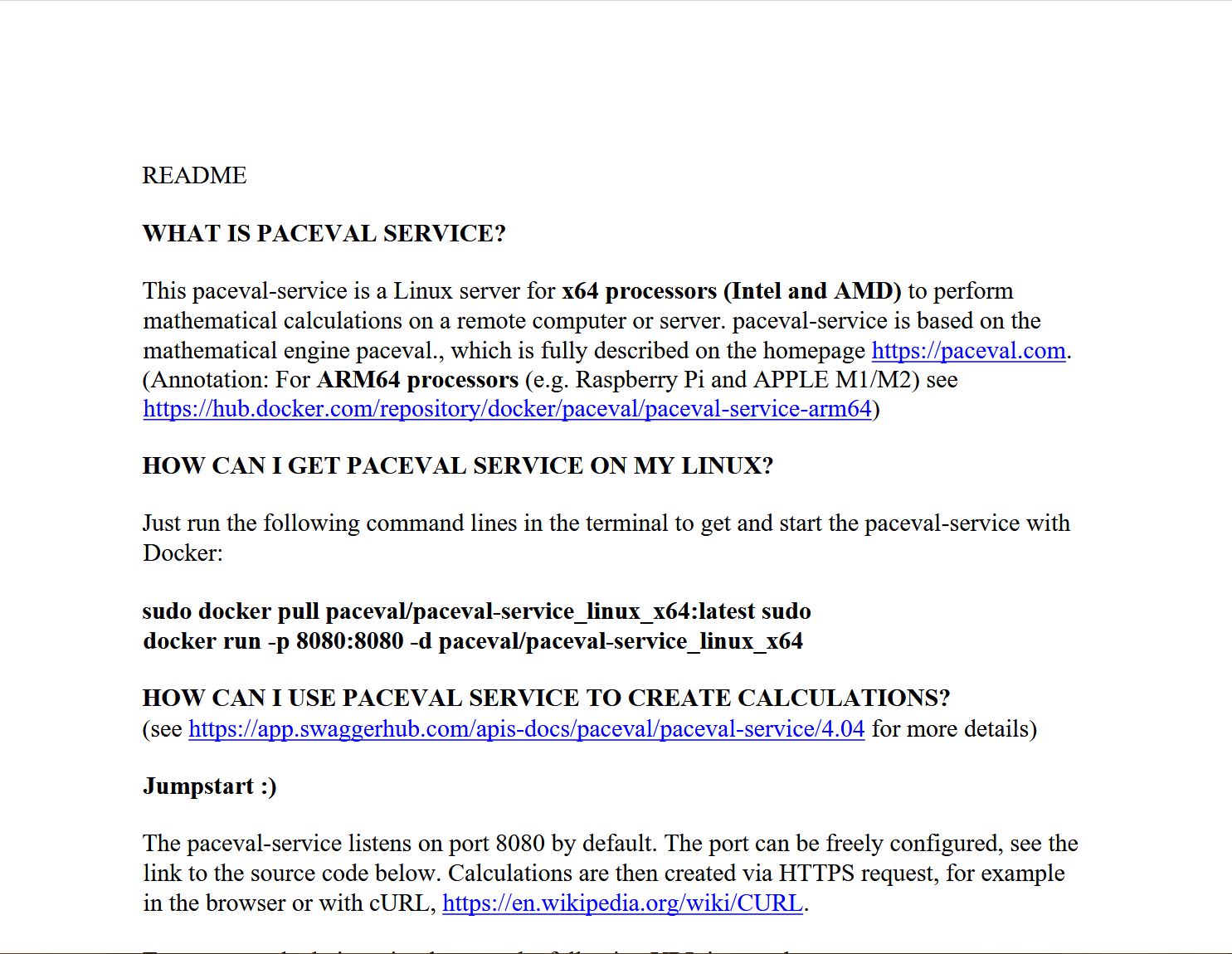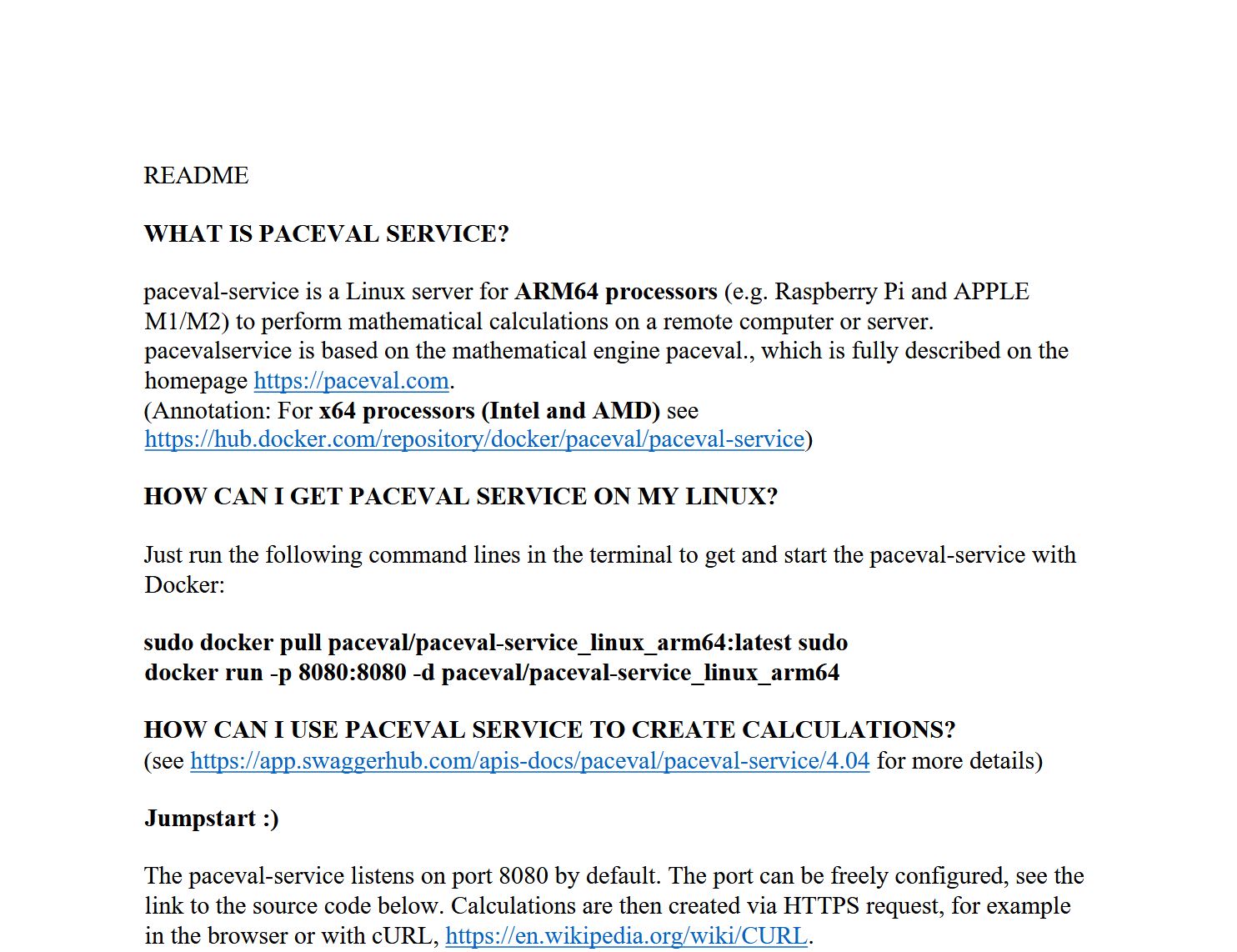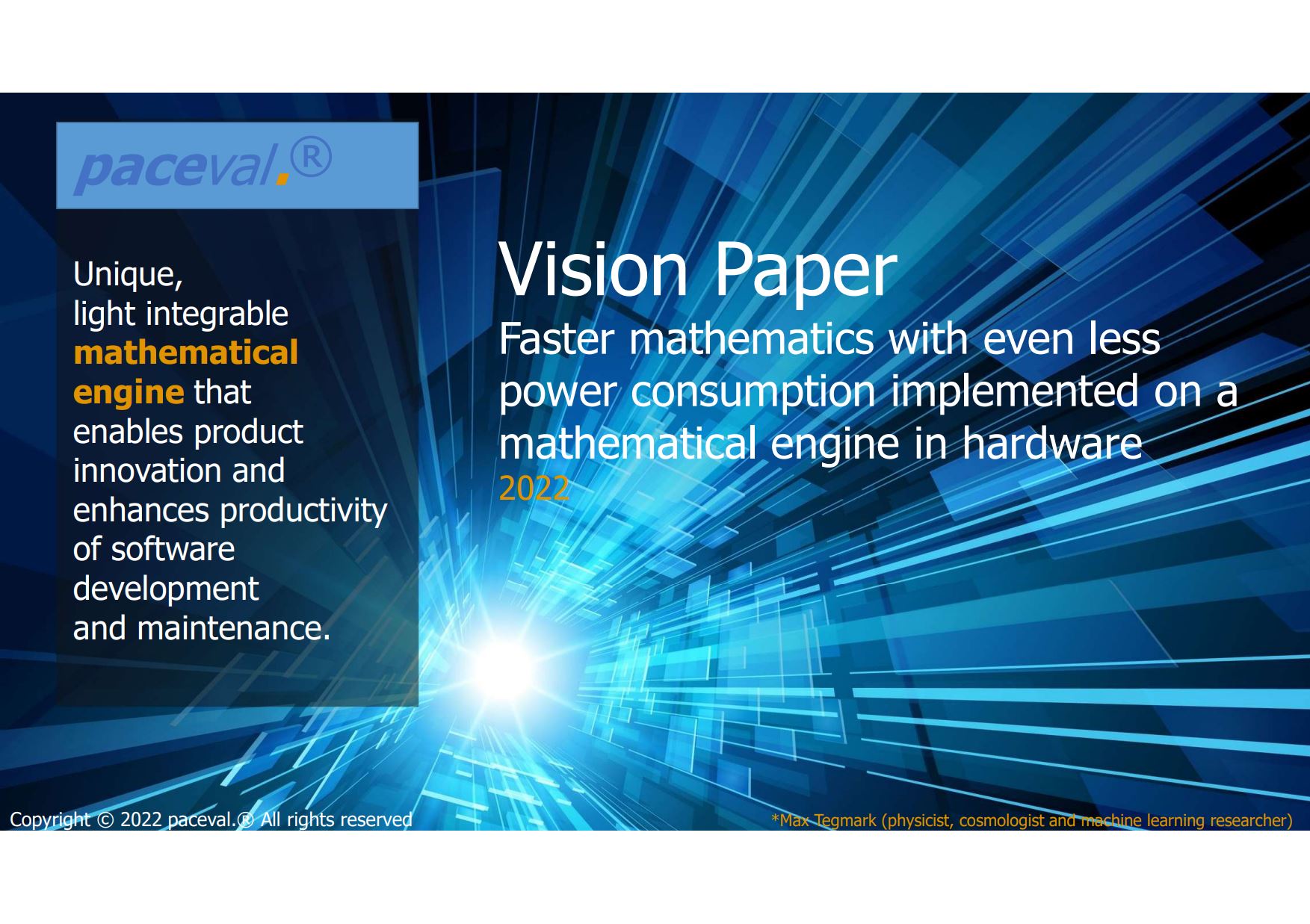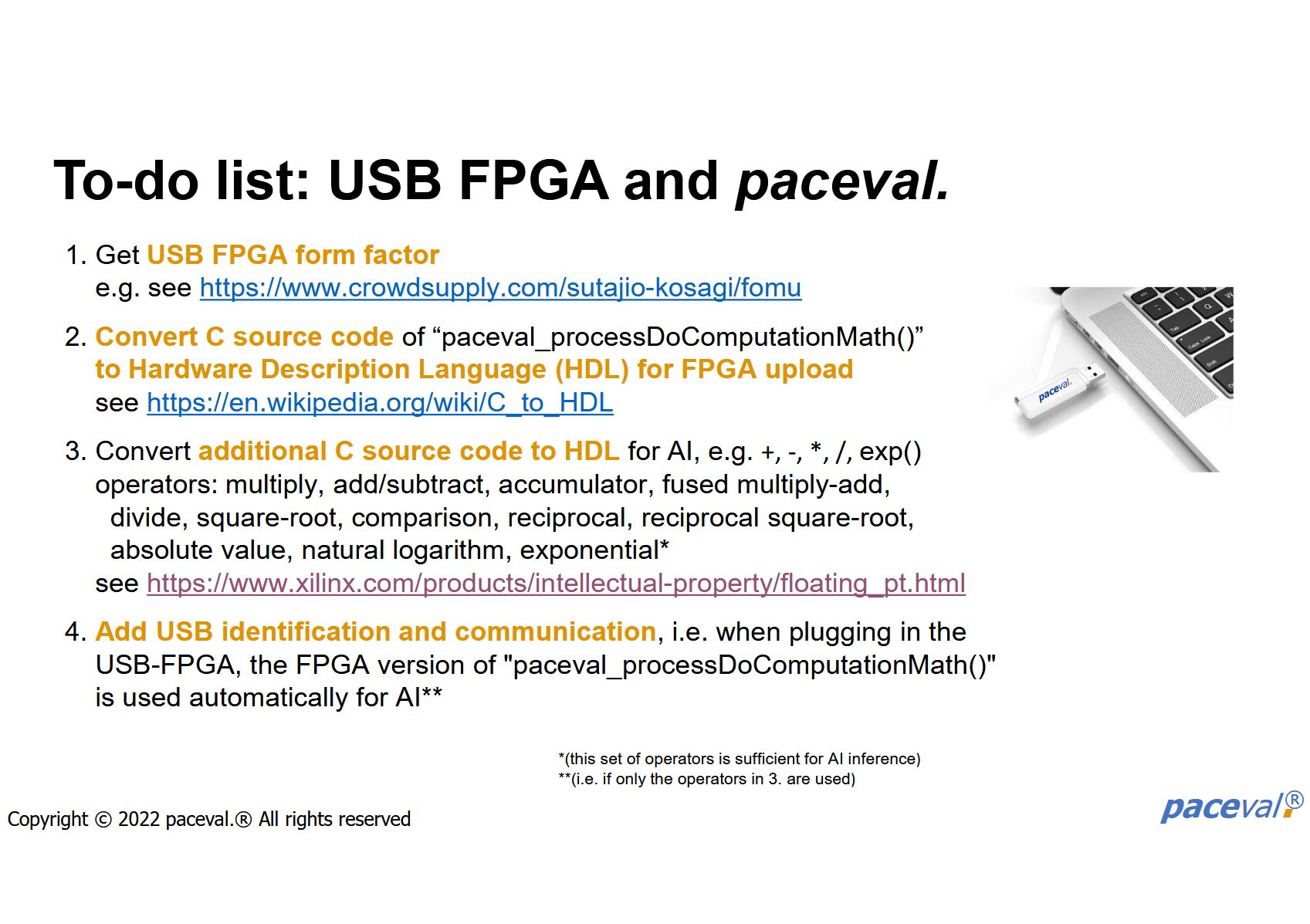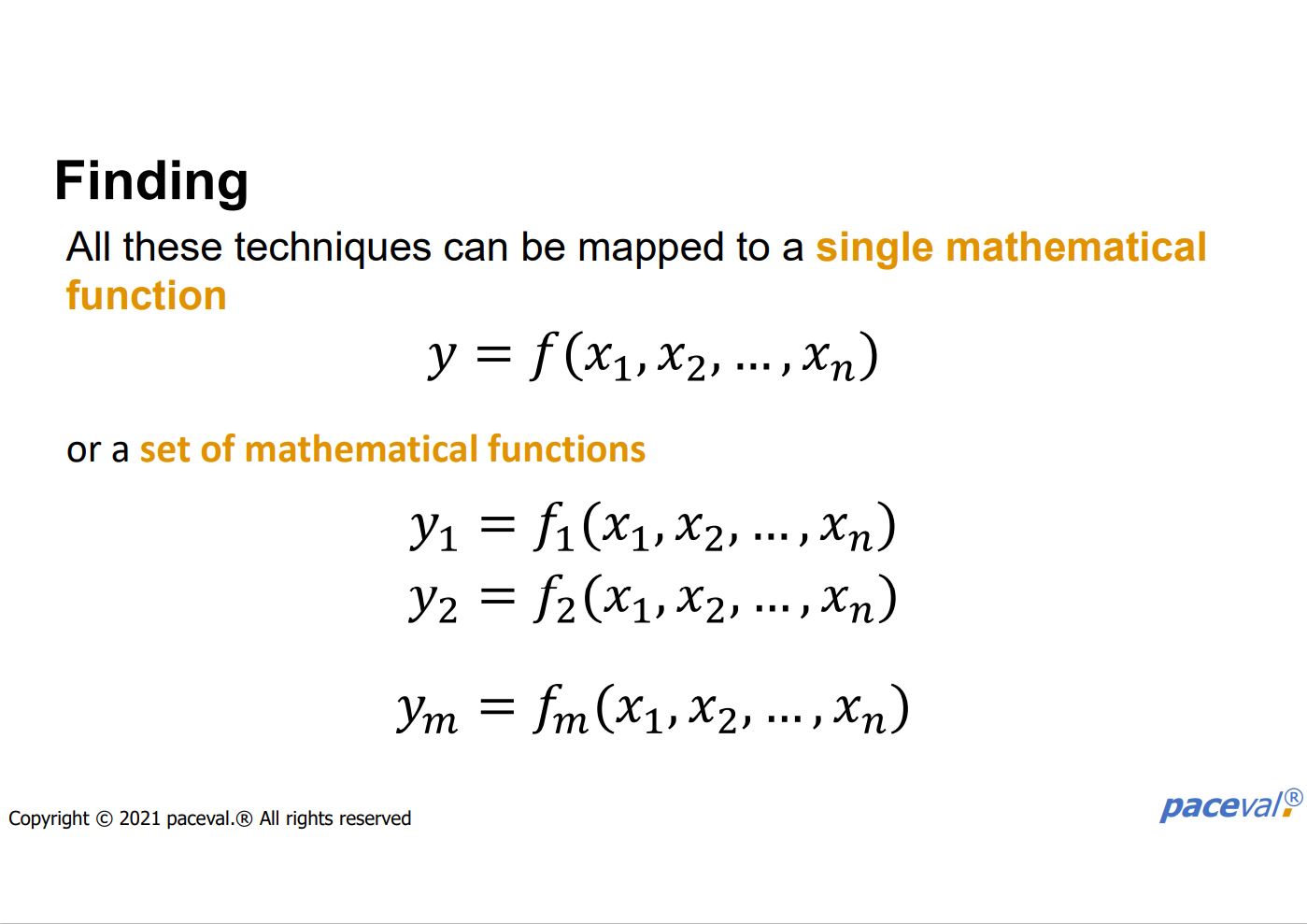Would you like to test paceval.?
Demo Downloads
You can download various demo products from our homepage, e.g., reference implementations
-
for various C++ compilers
-
for mobile platforms
-
for microprocessors, microcontrollers
-
for Internet of things (IoT) solutions and devices
Free Software Development Kit
You can download the Software Development Kit for Windows, Apple, Linux, Android, ARM and RISC-V below.
System architects and software engineers can then easily test the product features and possibilities of paceval.
Be one of the first to get our new paceval. Software Development Kit 4.24a.
The Software Development Kit includes demos and examples for Windows, Apple, Linux, ARM, RISC-V the latest compilers and earlier compiler versions.
You can download the installer for Windows here:
Download free ! paceval-Software Development Kit 4.24a (179 MB)
(Downloads – 1,890 : this free version 4.24a will run until January 2025)
If you are using other operating systems or processors. We have tailor-made solutions for all operating systems including Android and IBM POWER.
Or if you need a solution for a specific microcontroller like Microchip AVR, TI, STMicroelectronics, NXP Semiconductors or ASICs and FPGAs.
Don’t hesitate to contact us if you would like to license the paceval. library or the source code, send us an email at info@paceval.com.
Changes: (new) paceval. Software Development Kit 4.24a
– new API function paceval_dGetMultipleComputationsResultsExt() now officially available
– updated APPLE and RISC-V libraries (the library for APPLE silicon is now the fastest mathematical engine available, see “5 ms” below 🚀)
– overall optimization of performance
– unlimited usage of multicore systems, e.g. 56 cores on Intel’s Xeon Platinum 9200, 128 cores on AMD’s Epyc or higher
– optimization for interval arithmetic (TINC) precision
The document “paceval’s 3-minute pitch” gives investors and customers a very brief summary of our solution.
You can download the document here:
Download paceval's 3-minute pitch.pdf (729.7 KB)(Downloads – 801)
The document “paceval-expert paper-Conversion of neural networks to closed-form expressions” describes the method of exporting any neural network into closed expressions using mathematical formulas. Closed expressions for the outputs of a neural network can also offer several advantages, making them an attractive option for certain applications.
You can download the document here:
Download paceval-expert paper-Conversion of neural networks to closed-form expressions.pdf (1.3 MB)(Downloads – 169)
The presentation “Mathematical Engine-Motivation” explains our motivation and the idea of creating a new type of engine for mathematics.
You can download the presentation here:
Download paceval-Mathematical Engine-Motivation.pdf (10.5 MB)(Downloads – 421)
The presentation “Mathematical Engine-Our solution” describes the implementation of our patent protected mathematical engine paceval. in detail.
You can download the presentation here:
Download paceval-Mathematical Engine-Our solution.pdf (2.8 MB)(Downloads – 366)
Changes: (new) added: paceval. a new coprocessor
The document “Vision paper-“Mathematics is everywhere” Enabling sustainable distributed and decentralized mathematics” explains how you can easily realize a setup for AI that scales to your needs and reduces the environmental impact, too.
You can download the document here:
Download paceval-Vision paper-“Mathematics is everywhere” Enabling sustainable distributed and decentralized mathematics.pdf (1.5 MB)(Downloads – 273)
The document “paceval with Python-the Mathematical Engine as a Service (e.g. for multi-party computations)” explains how you can use the Python module, see https://pypi.org/project/paceval.
You can download the document here:
Download paceval with Python-the Mathematical Engine as a Service (e.g. for multi-party computations).pdf (389.5 KB)(Downloads – 198)
document
paceval with Python-the Mathematical Engine as a Service (e.g. for multi-party computations)

Use our high-performance engine server with Python for free !

The documents “paceval-service-a Linux server for x64 processors (Intel and AMD)” and “paceval-service-a Linux server for ARM64 processors (includes Raspberry Pi and APPLE silicon M1/M2)” explain how you can get and start the paceval-service with Docker.
The Docker Container Image paceval-service is a Mathematical Engine as a Service, e.g. for multi-party computations.
This service is easy to use, for free and the foundation of the Eclipse Diafanis solution.
You can download the documents here:
Download document-paceval-service-a Linux server for x64 processors (Intel and AMD).pdf (239.1 KB)
(Downloads – 255)
Download document-paceval-service-a Linux server for ARM64 processors (includes Raspberry Pi and APPLE silicon) (239.2 KB)
(Downloads – 212)
documents
paceval-service-a Linux server for x64 processors (Intel and AMD)
and
paceval-service-a Linux server for ARM64 processors (includes Raspberry Pi and APPLE silicon)

The document “Vision paper-Faster mathematics with even less power consumption implemented on a mathematical engine in hardware” explains how to create
a product in hardware based on our
product paceval. with an USB FPGA.
You can download the document here:
Download paceval-Vision paper-Faster mathematics with even less power consumption implemented on a mathematical engine in hardware.pdf (1.6 MB)(Downloads – 250)
The document “Vision Paper-Add capabilities of complex and precise mathematical functions to a database” explains how wide data can be analyzed with AI / ML and paceval.
You can download the document here:
Download paceval-Vision Paper-Add capabilities of complex and precise mathematical functions to a database.pdf (2.1 MB)(Downloads – 309)
We’ve moved all of the other downloadable items to the Login section.
If you want to increase your productivity and need access, send us an email at info@paceval.com.

